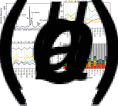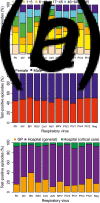Extensive multiplex PCR diagnostics reveal new insights into the epidemiology of viral respiratory infections
- PMID: 26931455
- PMCID: PMC7113017
- DOI: 10.1017/S0950268816000339
Extensive multiplex PCR diagnostics reveal new insights into the epidemiology of viral respiratory infections
Abstract
Viral respiratory infections continue to pose a major global healthcare burden. At the community level, the co-circulation of respiratory viruses is common and yet studies generally focus on single aetiologies. We conducted the first comprehensive epidemiological analysis to encompass all major respiratory viruses in a single population. Using extensive multiplex PCR diagnostic data generated by the largest NHS board in Scotland, we analysed 44230 patient episodes of respiratory illness that were simultaneously tested for 11 virus groups between 2005 and 2013, spanning the 2009 influenza A pandemic. We measured viral infection prevalence, described co-infections, and identified factors independently associated with viral infection using multivariable logistic regression. Our study provides baseline measures and reveals new insights that will direct future research into the epidemiological consequences of virus co-circulation. In particular, our study shows that (i) human coronavirus infections are more common during influenza seasons and in co-infections than previously recognized, (ii) factors associated with co-infection differ from those associated with viral infection overall, (iii) virus prevalence has increased over time especially in infants aged <1 year, and (iv) viral infection risk is greater in the post-2009 pandemic era, likely reflecting a widespread change in the viral population that warrants further investigation.
Keywords: Co-infections; pandemic influenza; risk factor analysis; surveillance.
Figures






Comment in
-
SARS-CoV-2 co-infections during an ongoing phase III common cold trial.Intern Med J. 2023 Aug;53(8):1511. doi: 10.1111/imj.16165. Intern Med J. 2023. PMID: 37599223 No abstract available.
References
-
- Nair H, et al. Global burden of respiratory infections due to seasonal influenza in young children: a systematic review and meta-analysis. Lancet 2011; 378: 1917–1930. - PubMed
-
- Murray CJ, et al. Disability-adjusted life years (DALYs) for 291 diseases and injuries in 21 regions, 1990–2010: a systematic analysis for the Global Burden of Disease Study 2010. Lancet 2012; 380: 2197–2223. - PubMed
Publication types
MeSH terms
Grants and funding
LinkOut - more resources
Full Text Sources
Other Literature Sources
Medical

